What is a stroke?
Well, a stroke is a sort
of brain injury that occurs when a blood vessel inside the brain becomes
blocked or bursts, cutting off the flow of blood and oxygen to the brain, which
is required for the brain to operate properly.
Type of Strokes
When it comes to
strokes, a blocked blood
vessel is responsible for
around 87% of all strokes. So a blood clot becomes stuck in there and blocks
off blood supply to a section of the brain.
The other type of
stroke, a bleeding stroke (also known as a hemorrhagic stroke), is
significantly less common, accounting for just around 13% of all strokes.
What happens to the brain when a stroke occurs?
So, what happens if the
blood and oxygen supply is cut off? So, for every minute that the brain is
deprived of oxygen, roughly 1.9 million neurons, 14 billion synapses, and 7.5
miles of myelinated fibres are lost, and a pea-sized section of brain tissue dies after about 12 minutes from the start of a stroke. When a stroke first occurs within a few minutes,
there is a small area of the brain that is permanently impacted and a larger
area of tissue that can be saved if blood flow to the brain is restored. As
time passes, the salvageable brain, or penumbra, becomes less and the core
infarct becomes larger until they are matched and the stroke is completed. Then
there's nothing we can do to treat the stroke. The symptoms of a stroke vary
depending on which part of the circulatory system is affected by the blood clot.
Statistics for Strokes in the United States
So we want to think of a stroke as a brain attack. Everyone is familiar with a heart attack, which
occurs when blood flow to a specific part of the heart is blocked. Well, you
may think of a stroke as a stoppage of blood flow to a part of the brain. Every
year, roughly 795,000 people in the United States suffer from strokes. In the
United States, stroke is the fifth leading cause of death. However, it is the most common cause of adult
impairment.
So this figure on the
right depicts the United States, and that very dark purple area is what we call
the United States' stroke belt, and it's where the highest stroke death rates
are in the southeastern half of the country.
Signs and Symptoms of Stroke
Let's talk about how to
recognize the signs and symptoms of a stroke.
1. Sudden Loss of Balance
Is there a sudden loss
of balance or coordination, or are they attempting to walk but falling to one
side or the other? Maybe they're walking as they've just finished a bottle of
Jack Daniels? Although you knew they hadn't had anything to drink, they
suddenly lost their balance and coordination, which led to the area of the
brain. So, on the right, you can see the cerebellum,
which is the very bottom region of the brain that regulates our balance and coordination. So a stroke in that location could cause you to
lose your balance suddenly.
2. Sudden loss of vision
Is there a sudden loss
of vision or a decline in vision in one or both eyes? It could just be a
partial loss of vision in one or both eyes, maybe half of the vision in one or
both eyes, and that type of stroke happens in the very rear region of the brain. On the right, you'll notice a small section, which
indicates that a stroke in that area of the brain can cause visual issues.
3. Facial Droop
Is there a facial droop?
When you ask someone to smile, does one side of their face droop? Does one arm
slip down when you ask them to lift both arms? This can also apply to the leg.
However, it is not as common as arm numbness or weakness. That's the same
circulation zone that you see in the top area of the brain, so that's the area of circulation where a
stroke happens and affects the face, arm, and leg.
4. Slurred Speech
Do they have slurred
speech? Are they unable to communicate in any way? Is it difficult to
comprehend them, or do they appear to be making up words? You can get someone
to repeat a simple line, such as "Today is a sunny day." Did they
correctly repeat the sentence? Did they utilize the correct terminology? Did it
come across as normal? If there are changes in speech, it could be due to
alterations in the frontal or temporal lobes of the brain. So, if we look right in the center of the brain, it may be a stroke impacting speech.
Then contact 911. If you
or someone you're with gets any of those symptoms; even if they go away, it's
critical to get to the hospital as soon as possible. As a result, for a stroke,
dial 911. A stroke is a medical emergency.
Risk factors for stroke
We aim to lower our
stroke risk, recognize stroke symptoms, and respond quickly if a stroke occurs.
So, in the United States, a stroke occurs every 40 seconds, yet we know that
80% of strokes are preventable. As a result, we have risk variables such as our
age and race. Those dangerous variables are beyond our control. However,
numerous risk factors can be altered. By treating and controlling our medicine,
we can lower our risk of stroke.
1. Age
After the age of 55, the
chances of having a stroke virtually double every 10 years. Even though strokes
appear to be more common in the elderly. Strokes affect many people under the
age of 65. They might have a few more risk factors than others. However, we
must remember that anyone, including children, can have a stroke. Being aware
of the signs and symptoms will assist you in recognizing stroke symptoms in
people of all ages.
2. Family Tree of Diseases
A stroke in the family
can also increase your chances of having one. If one of your parents,
grandparents, sisters, or brothers has had a stroke, especially if it happened
before the age of 65, you may be at risk of getting one as well.
3. Race
Statistics demonstrate
that African Americans had a substantially higher incidence of stroke and
mortality from stroke, as well as some higher risk factors for stroke than
Hispanics and Latinos.
4. Gender type
As a result, our gender can influence our stroke risk. Every year, women have more strokes than men, and strokes kill more women than men. Each year, roughly 55 000 more women than men have a stroke, and did you know that stroke kills twice as many women as breast cancer? Pregnancy-related problems, a history of pre-eclampsia or eclampsia, gestational diabetes, oral contraceptive use, especially when mixed with smoking, and subsequently post-menopausal hormone therapy can all be risk factors for increased stroke risk, and one in every five women will have a stroke.
So, if you're in a group of five ladies, you'll have to look around and figure
out who will be the leader. It's not me. Just joking. However, it is a very
serious danger, and you should discuss any concerns you may have with your
doctor.
5. Previous Attacks or Strokes
Having had a previous stroke, transient ischemic attack, or even a heart attack can increase your risk of stroke. A person who has had a stroke has a much higher risk of having another stroke than someone who has never had a stroke, and transient ischemic attacks, also known as TIAs, are very strong predictors of stroke risk.
A TIA
is a much smaller temporary blockage of blood to the brain that causes the same
symptoms as a stroke. However, they may be milder, and a transient ischemic stroke
does not result in chronic brain damage. So that's the difference between a TIA
and a stroke, and if you've had a heart attack before, you're more likely to
get a stroke. Because plaque grows up and creates blockages in the blood
arteries of the heart, much as plaque builds up and causes blockages in the
blood vessels of the brain, a heart attack is frequently caused by plaque.
How to Reduce the Risk
of Stroke
Now let's get to the
exciting part. Determining which stroke risk variables we can influence. Things
we can cure and improve to lower our chances of suffering a stroke
1. Blood Pressure Monitoring and Control
As a result, high blood pressure is the primary cause of strokes worldwide, not only in the United States. So, if we keep our blood pressure within healthy ranges, we may lessen the strain on our hearts and enhance blood flow in the arteries. It preserves the kidneys, which helps us live longer and healthier lives.
According to the American Heart Association, normal blood pressure is 120 over 80 or less. So, what exactly does that imply? If your blood pressure is normal, we recommend that you maintain a healthy lifestyle and check your blood pressure once a year.
If your blood pressure rises a little, the range is 120 to 129. However, the lowest value remains below 80. We advise you to live a healthy lifestyle. If you don't, make some lifestyle adjustments, such as a healthier diet and more exercise, and have your blood pressure monitored every three to six months.
If you have high blood pressure, your top number should be between 130 and 139 and your bottom number should be between 80 and 89.
If your blood pressure is very high, which is anything above 140 on the top number and 90 on the bottom number, you should see your doctor and they should do a health risk assessment on you. If your blood pressure is very high, which is anything above 140 on the top number and 90 on the bottom number, you should see your doctor. They should prescribe medications and have more frequent blood pressure monitoring.
So, while you're having your blood pressure checked, keep this in mind. The first thing you should do is stop smoking. Don't drink a lot of caffeine, don't exercise, and just relax for a few minutes before checking your blood pressure. Make sure the cuff is in the appropriate spot and the right size during the blood pressure check. Sit still, don't move around, and don't talk during the time your blood pressure is being taken because this might cause readings to change. As a result, we recommend that you check your blood pressure a couple of times following your initial reading. so take a minute between them. So take your blood pressure once, wait one minute, and then take it again, averaging the two values. If one reading is really high and the other is significantly lower, you should check the third one just to be sure, and then consult your doctor. Write them down in a log and bring them with you to your doctor's appointment.
This will give them a good sense of what your blood
pressure is like when you're at home and doing your normal activities versus
when you're nervous and they check your blood pressure, which may be a little
higher. Keeping track of your blood pressure at home is beneficial.
2. Control Diabetes
Diabetes is the next risk factor that we can manage and control. As a result, having diabetes can significantly increase your chance of having a stroke. As a result, patients with diabetes frequently have high blood pressure, high cholesterol, and weight problems. As a result, your risk of stroke increases even more.
In the United
States, an adult with diabetes is hospitalized for a stroke every two minutes.
As a result, working with your doctor to properly manage your diabetes can
lower your risk of having a stroke.
3. Controlling Cholesterol Levels in the Blood
High cholesterol is the next risk factor. As a result, the chance of clogged arteries and plaques forming inside our arteries, which can obstruct blood flow and cause a stroke or heart attack, increases. As a result, we must include nutrients in our diet that promote heart and brain health.
Lean meats, plenty of fruits and
vegetables, and low-saturated and trans-fat diets. As a result, fried and fatty
foods enhance our blood cholesterol levels. High-salt or sodium diets raise
blood pressure, as do very high-calorie diets; thus, a lot of sweets and other
sugary foods can contribute to obesity. As a result, we wish to consume
vitamin-rich fruits and vegetables that help to lower blood pressure, increase
cognitive function, and improve blood vessel health.
4. Increase the physical activity
Taking part in sports. If you are not physically active, you must begin to move and become more active. Physical inactivity raises your chances of stroke, heart disease, being overweight, developing high blood pressure, increasing cholesterol levels, and diabetes. Therefore, getting some exercise every day will help you live longer and better. So take brisk walks, take the stairs instead of the elevator, and do whatever you can to increase your physical activity.
The American Heart
Association suggests that we get at least 30 minutes of physical exercise five
days a week. Does this imply that you must go out and walk for 30 minutes at a
time? No, if you break it down into smaller chunks. So, if you can go for a 10-minute
stroll in the morning, that's great. Swimming is an excellent activity because
it's low impact and doesn't generate joint stress. If you swim for 10 minutes
in the afternoon and 10 minutes in the evening, you'll get 30 minutes of
physical activity. So, before you begin any exercise, I urge that you consult
with your doctor, especially if you haven't exercised in a long time.
5. Keep your weight (BMI) at a Healthy Level
As a result, to maintain
a healthy weight, if we are overweight, we must take action to reduce our BMI
to a healthy level. Because obesity and excess body weight are associated with
higher risks of high blood pressure, diabetes, heart disease, and stroke. Are
you noticing a pattern here? Simply living a healthy lifestyle and doing healthy
things can help us avoid strokes while also lowering our risk of heart disease
and other health problems that make us unwell.
6. Prevent from Smoking
Studies have proven that
cigarette smoking, including vaping or smokeless tobacco, is a significant risk
factor for stroke. Cigarettes include nicotine and carbon monoxide. However,
nicotine, which is found in smokeless tobacco and vaping devices, destroys
blood vessels and can lead to strokes and heart attacks. If you smoke, we
encourage you to stop. If you need assistance quitting, there are many options
available, and Hogue offers materials that can assist you with tobacco
cessation or quitting smoking.
7. Atrial Fibrillation
Atrial fibrillation,
also known as AFib, is an irregular heartbeat that causes the upper chambers of
the heart to quiver instead of beating in an organized rhythmic manner. This
increases the risk of having a stroke by five times because the fluttering of
the upper chambers of the heart can cause blood to pool in those chambers, and
when blood isn't moving, it can form a clot, and then the heart beats normally
again. If you have AFib, you should know what your other stroke risks are, and
you should work with your doctor to seek the correct treatment to help reduce
your risk of having a stroke.
8. Carotid Artery Disease
Following that is
carotid artery disease. The carotid arteries are two blood vessels that run up
and down the neck, supplying blood to the brain. So, if the carotid artery is
restricted by fatty deposits or plaque buildups in the arterial walls, a small
blood clot might become caught in there and shut off blood supply to not only
one portion of the brain but also to the neck. It will sever the blood supply
to one-half of the brain. Because of their proximity to the brain, carotid
artery blockages are more likely to result in a stroke than other arterial
illnesses. If you have carotid artery disease or any other vascular condition,
consult with your doctor to receive therapy to reduce your chance of having a
stroke.
9. Drink Enough Water
Staying hydrated is another extremely simple technique to help prevent strokes. So make sure you have enough water every day. As a result, dehydration is associated with inflammation, arterial stiffness, blood pressure regulation, and other risk factors for heart disease and stroke. So, one of the most effective ways to improve our health and well-being is to drink enough water throughout the day.
So one of the things that happens as we get older is that our sense of thirst becomes less acute. As a result, as we get older, we may not even realize we're thirsty. So, if you're getting older and you're starting to feel thirsty, you're already dehydrated. Drinking plenty of water during the day is therefore beneficial and essential. So that you don't become dehydrated. However, you should not try to drink all of your water until the end of the day. Because you'll be up all night going to the bathroom and won't be able to get a full night's sleep.
If you drink plenty of water throughout the day and if you do consume alcohol, do so in moderation. People should limit their alcohol-related hazards by drinking in moderation, according to US dietary guidelines. That means women can have up to one serving of alcohol per day and men can have up to two servings per day, with a serving being one bottle of beer, one five-ounce glass of wine, or 1.5 ounces of liquor. So, once again, use caution.
10. Sleep Well
Then, restorative sleep aids in our overall wellness. Your entire body, including your heart and brain, benefits from a good night's sleep. It boosts our mood, memory, and cognitive abilities. When we sleep at night, the cleanup crew runs through our brains and cleans up all the byproducts of our daytime brain function.
As a result, if we don't get enough sleep or rest, our brain doesn't clean up as well at night. That is why getting enough sleep is crucial, especially if you have sleep-related breathing problems. So we call that sleep apnea when you snore a lot and then stop breathing, snort, and then start breathing again.
This is a really high risk for stroke because it raises the blood pressure in the brain during those periods when you're not breathing well during sleep, even if your blood pressure throughout your body is normal. As a result, there is a danger of stroke, and we know that sleep apnea is bad for the heart. As a result, heart failure, high blood pressure, atrial fibrillation, resistant hypertension, type 2 diabetes, and stroke become more likely.
So that means snoring to
death, which sounds amusing but isn't. So if you know you have snoring and
breathing issues, or if someone you're with says, "My gosh, you snore like
a freight train," or "I had to hit you during your sleep to get you
to start breathing again," you should contact a sleep specialist and get a
sleep apnea study done.
So keep in mind that 80%
of strokes can be avoided. Keep your stroke risks low with frequent exams and
treatment for any medical issues you may have. So stroke risk scoring is
something we want to undertake.
Stroke Risk Scorecard
If you want to look at Stroke Risk Scorecard, go to the left column and look at the red box. So you check those boxes and see what high-risk situations you have. Things in the yellow column have a moderate risk of stroke, whereas those in the green column have a low risk of stroke. So you can go through those boxes, check them off, and sum it up, and if you have high-risk factors for stroke, you should take that information to your doctor and discuss ways to maximize those risk factors for stroke prevention.
What is a Transient Ischemic Attack?
I briefly mentioned TIA, or transient ischemic attack. A TIA is a warning stroke that is frequently referred to as a small stroke. It's an early warning indication of a forthcoming stroke. As a result, more than a third of individuals who have a TIA will go on to suffer a complete stroke. As a result, the symptoms of a TIA are the same as those of a stroke. They take minutes to hours to resolve.
However, if you feel you or someone you're with is having a TIA, get emergency medical assistance and dial 911, even if the symptoms go away. Because those symptoms can reappear at any time. So you might be thinking, "Wooh!" Thank God, that was the only thing that bothered me. That's when you should go to the emergency room. So that we can run a workup and figure out where those symptoms came from, whether it's a blood clot or a blockage that has to be treated. So that we can prevent you from having a complete stroke and becoming permanently disabled.
Every four minutes,
someone in the United States dies of a stroke. The sooner a stroke victim gets
to the hospital, the sooner they can receive life-saving care. So, if you're
experiencing stroke symptoms, dial 911 as soon as possible.
Thank you for taking the time to read my post; I hope to see you again in another article.


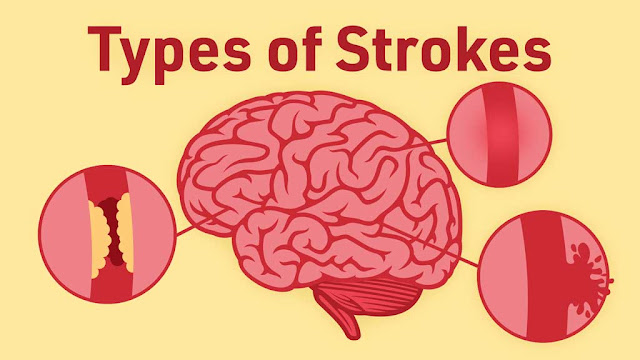
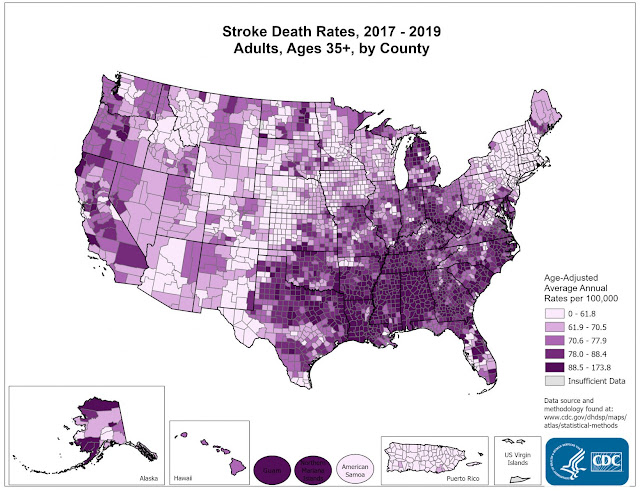
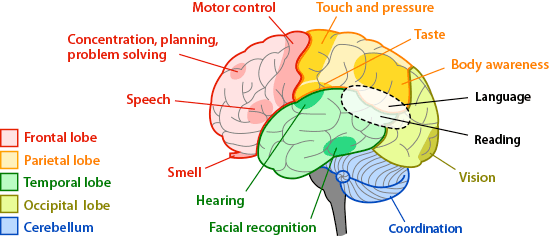
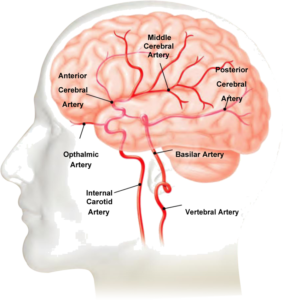
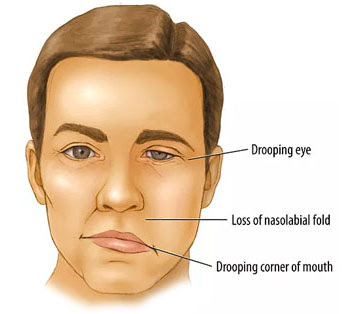
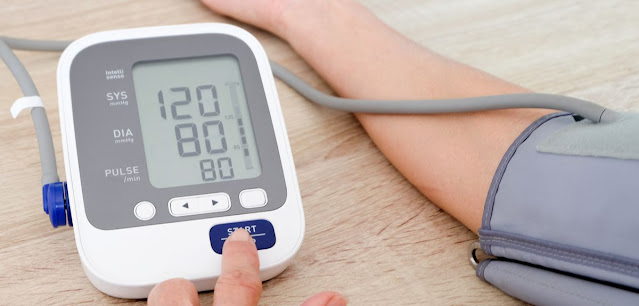


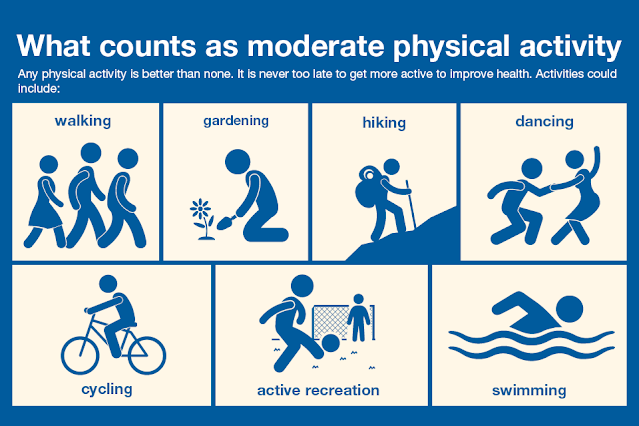

.jpg)

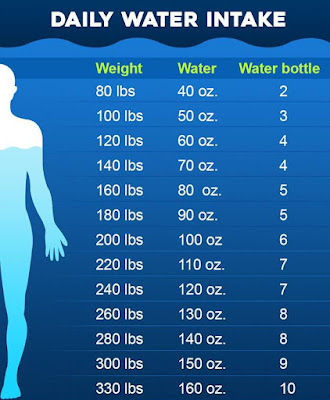

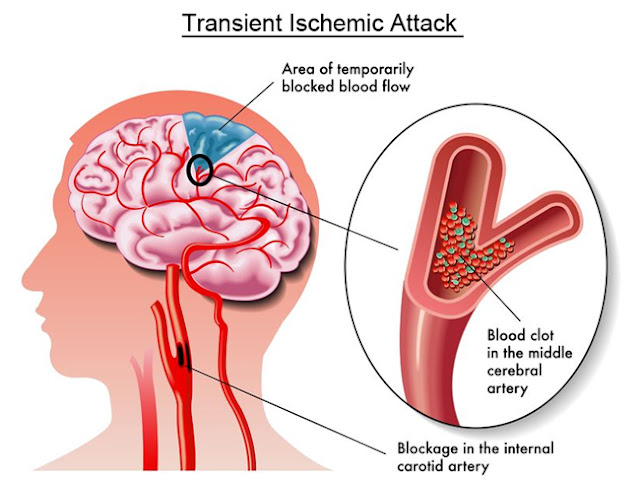




0 Comments